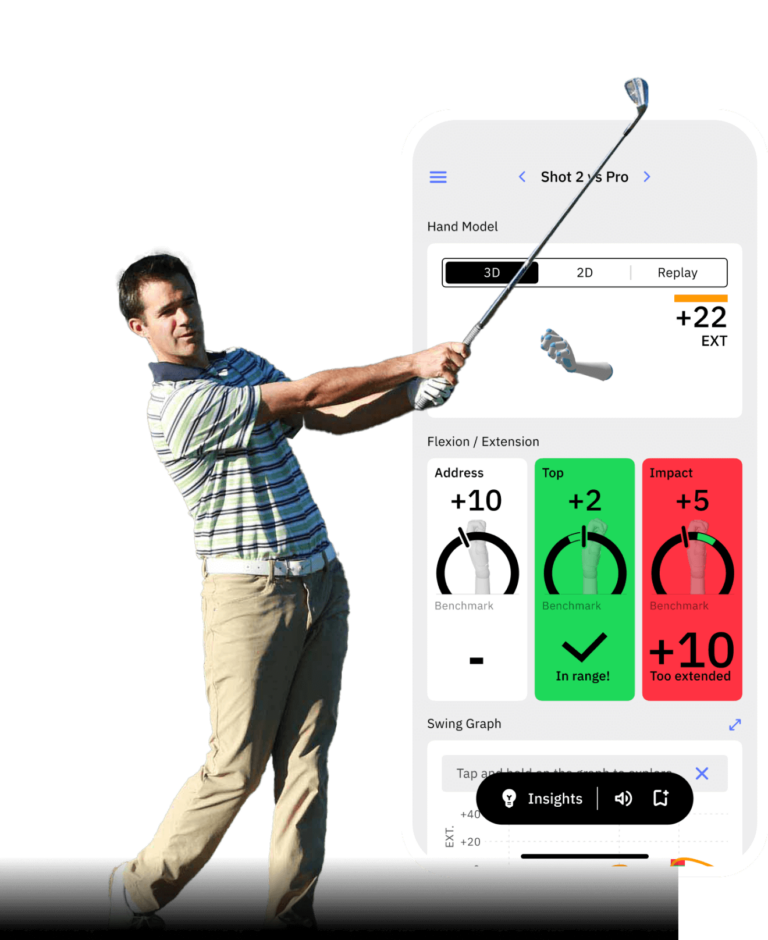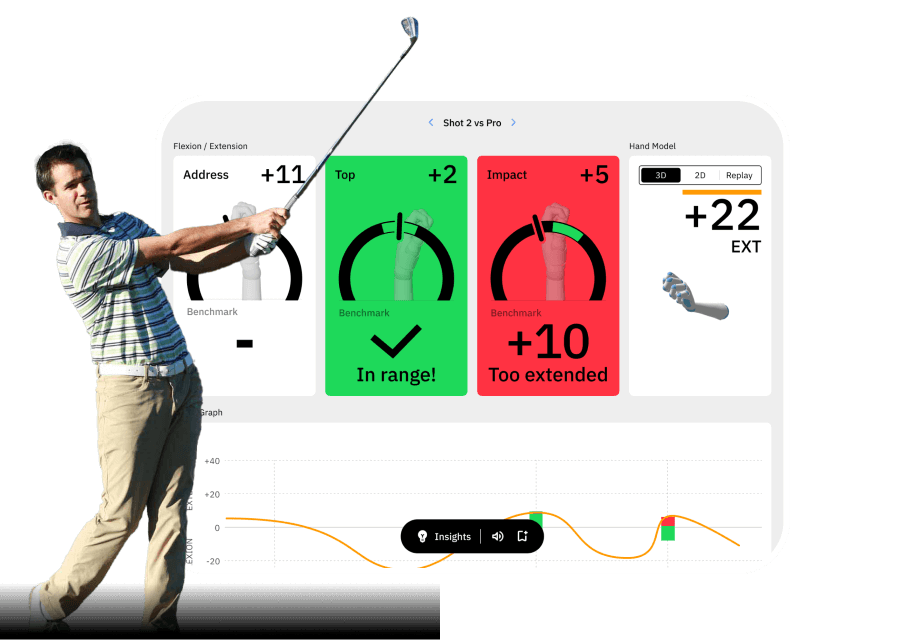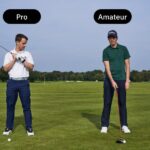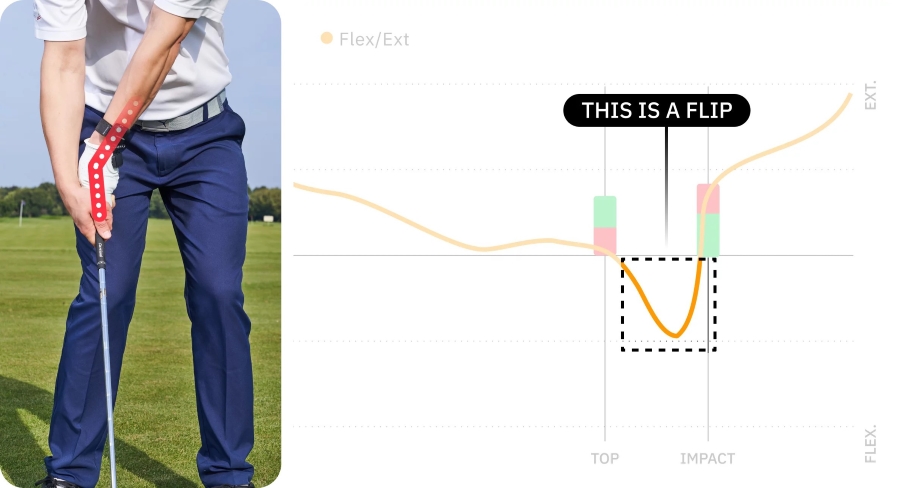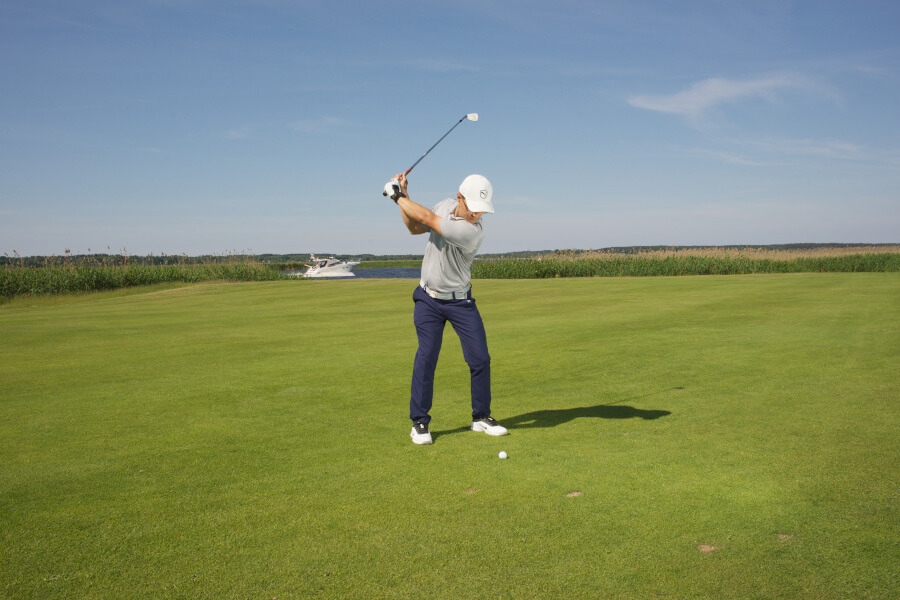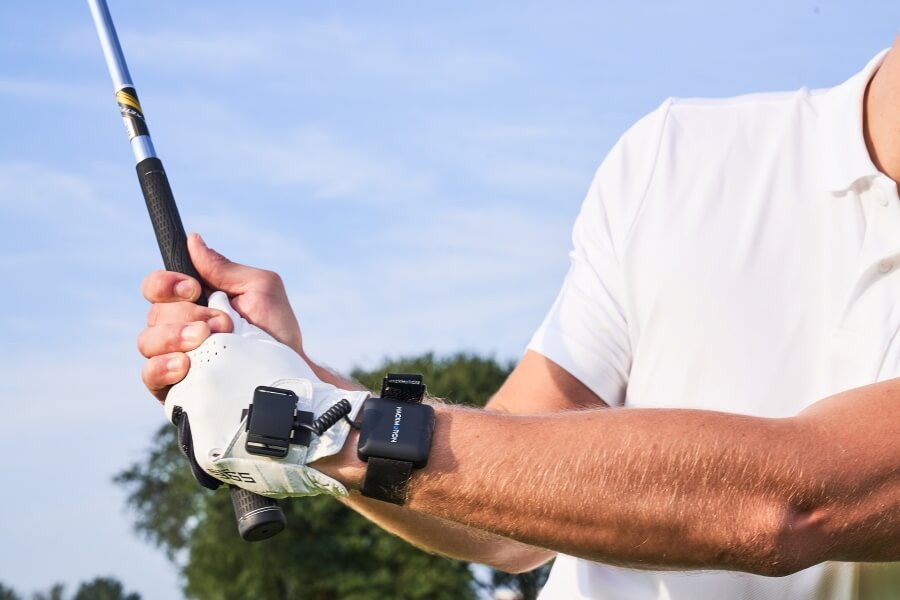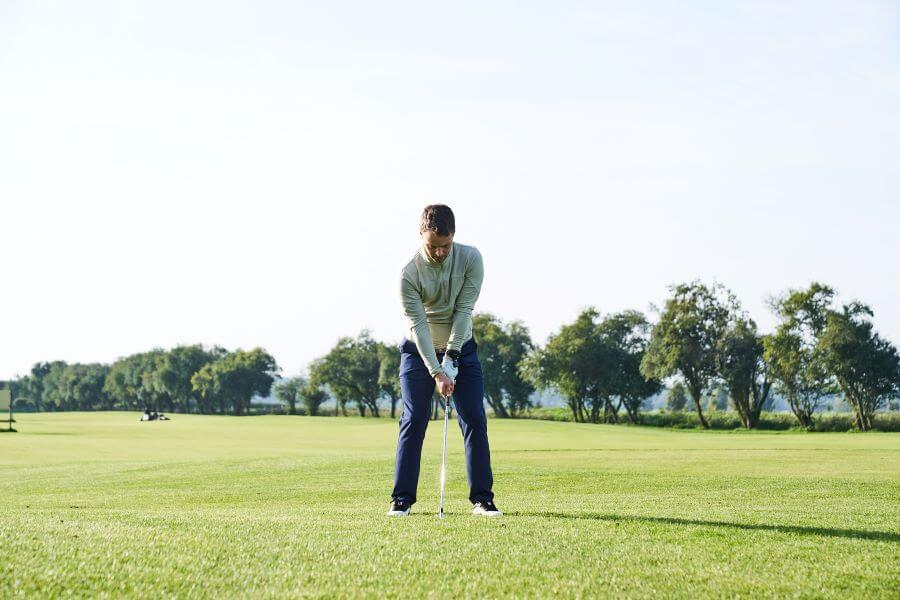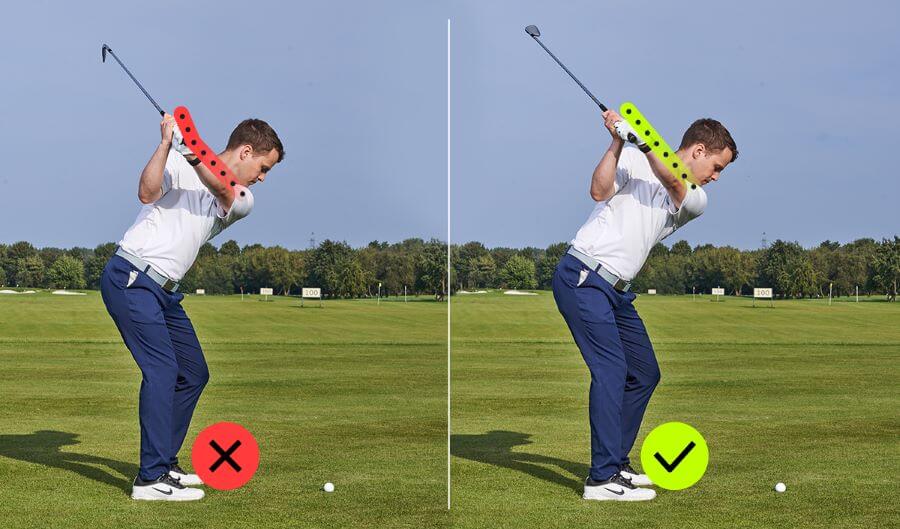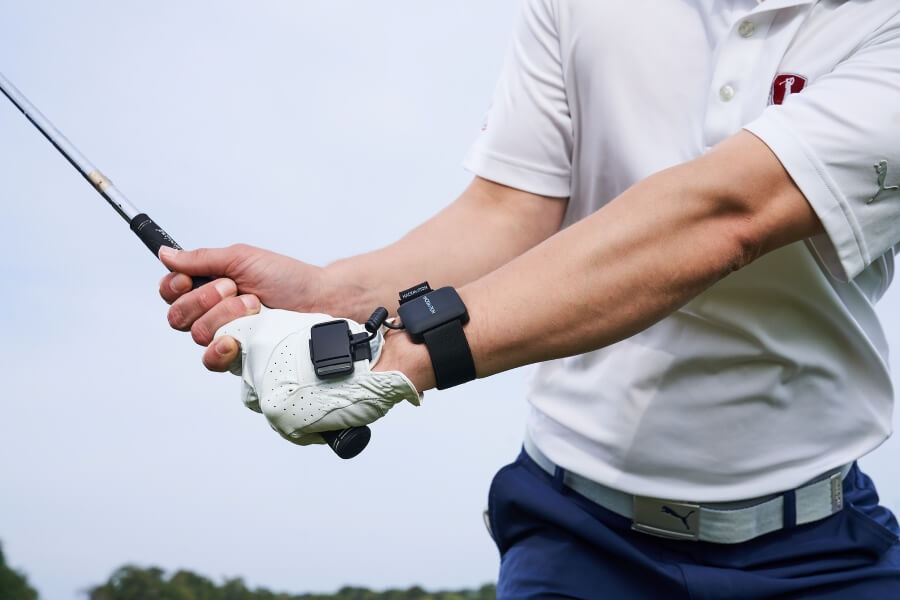How Grip Can Affect Radial Deviation (by Golf Coach Russell Heritage)
The grip is the only connection we have with the golf club. If it’s incorrect, it could be causing the lack of power you have in your golf swing.
Golf Coach Russell Heritage looked deeper into why this is and what you can do in your golf game to gain power.
The key to this movement is radial deviation, and it’s something that all golfers are currently doing; you may not be doing it effectively.
Key Takeaways
Take a look at the photo explanation and practice drills below. However, if you want a quick rundown of what you need to know about radial deviation and the grip, this is it:
- Gripping the club too much in the palm can limit wrist motion in the backswing.
- Limited wrist motion in the backswing causes a leak of power and lost distance; getting the grip more in the fingers makes this possible.
- Radial deviation or wrist cocking is a fundamental wrist motion in the backswing that increases power.
How it Works
Radial deviation is also known as the amount of wrist cock in the backswing. Radial deviation is the movement of the thumb closer to the forearm, the cocking of the wrist. Ulnar deviation is the movement away from the forearm and the uncocking of the wrist.

Radial deviation needs to be added in the backswing to be able to achieve a good position at the top.
In the example covered by coach Russell Heritage, he starts with an element of ulnar deviation in the address position (-20° ). In the backswing, the radial deviation is added to have a good club position at the top (15° radial deviation in the example).
Finally, in the downswing, it should be natural uncocking motion returning close to the initial position (in the example: back to -14°).
The degrees will naturally vary for each player, but the tendency for angulation at each position should remain the same. With all wrist motion and action, following patterns is very important.
Now, let’s go further by looking at the role of the grip in producing issues for golfers.
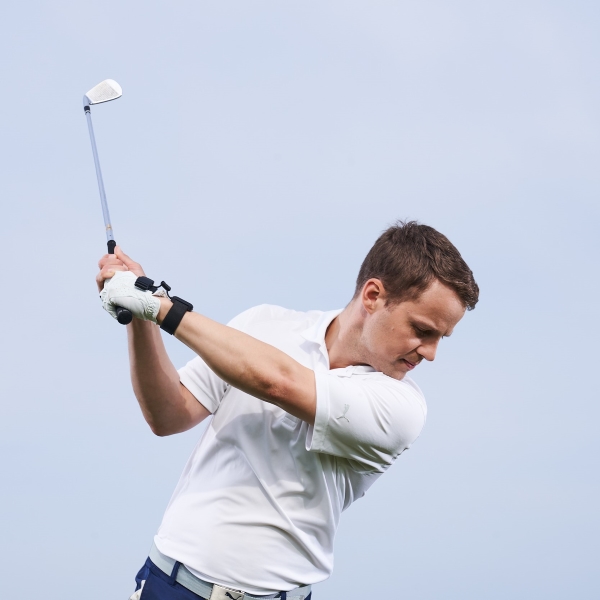
Take control of your golf game by learning wrist mechanics with our FREE online guide.
Common Problem: Gripping the Club Too Much in the Palm
If you grip the club too much into the palm and not in the fingers, it limits your ability to add radial deviation in the backswing.
Players sometimes try to bend their arm, making sure that they get the proper angles in the backswing. However, what typically happens is the player gets a false impression of doing it right and ends up with a less powerful shot than what would have been with a proper golf grip.

Instead of gripping the club too much in your palm, there are a couple of alternatives you can try.
Option A:
Hold the club in your fingers. The finger-orientated grip produces more extension on the wrist.

Option B:
Have the club closer to the palm. It produces a flatter wrist position.

As long as you are not gripping the club entirely in the palm, you should be able to create the needed motion of adding radial deviation.
See in the images below how you can test the ability to add radial deviation – the good and bad examples.
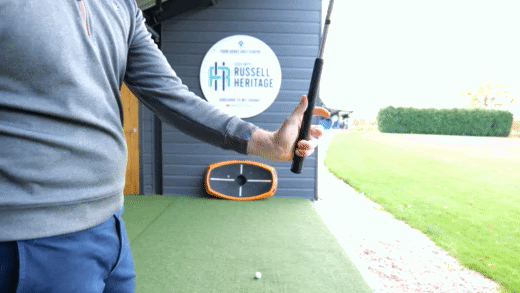

Final Thoughts
HackMotion sensor is one tool that can help identify and avoid such mistakes.
Boost your progress by ensuring you are adding radial deviation in the backswing. For more information on how the sensor can assist your golf game, check this page.
Images courtesy of Russell Heritage
